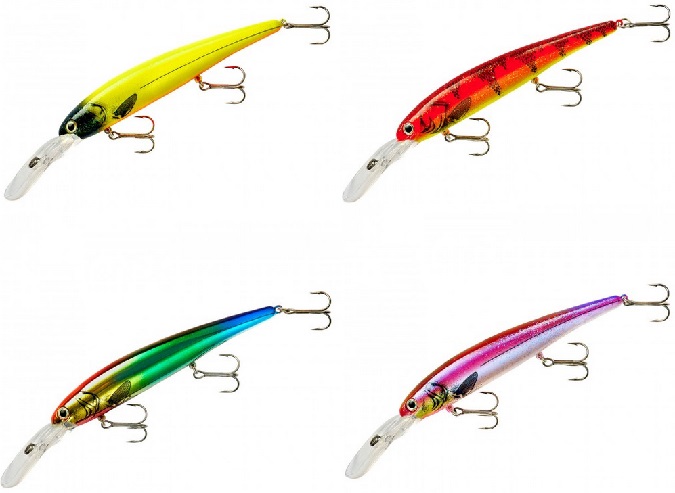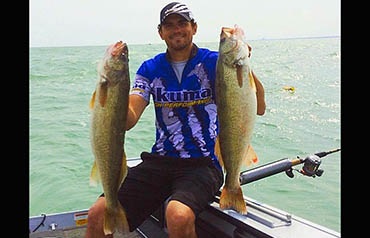 The early-season flurry is long over and the fall frenzy is still on the horizon, leaving Great Lakes walleye anglers to face some of the most difficult fishing of year.
The early-season flurry is long over and the fall frenzy is still on the horizon, leaving Great Lakes walleye anglers to face some of the most difficult fishing of year.
“August and early September are tough because water temps are at their peak (mid 70s) and walleyes are scattered throughout the lake,” said Bandit ambassador and tournament angler Zak Jobes. “They could be holding on near-shore structure, or 10 miles offshore feeding on suspended bait, and you simply have to find them.”
The key to catching late-summer walleyes is to cover water while watching the sonar screen. “I’ll run 20 to 30 mph just looking for fish.” he said, adding that sonar equipment capable of marking fish at high speed, and the ability to interpret what’s on the screen, are essential to this approach.
“At that speed walleyes will appear as dots on the screen,” he explained. “When I see what I’m looking for, I’ll turn around and make a slower pass to confirm that they’re walleyes before I even set the trolling gear.”
Because water temps have everything moving in high gear, Jobes typically starts trolling Bandit Walleye Deep crankbaits on side-planers at 1.7 to 1.8 mph.
“The Bandit Deeps have the tight, aggressive wiggle that triggers strikes this time of year,” he said, “and they have a steep dive curve that can reach walleyes holding deep.”
The final piece to the puzzle is fine-tuning trolling speeds by making wide S-turns. “If the outside lures are getting hit, I know I need to kick up the speed a bit. When the inside lures are more productive, I need to crank it down a notch.”
Later on, when the water temperature drops into the low 60s and 50s, Jobes slows the troll and swaps lures, opting for a Smithwick Perfect 10 or Top 20, which have a wider, more seductive wobble.
But for now, he recommends anglers search for fish aggressively, troll at a fast pace, and look forward to the cooler season ahead.
– See more at: http://www.lurenet.com/blog/tips-for-tough-late-summer-walleyes/#sthash.qZZYysBy.dpuf

